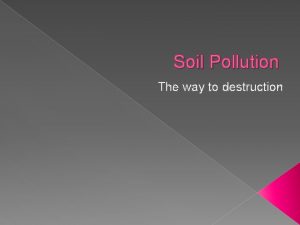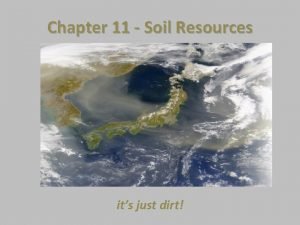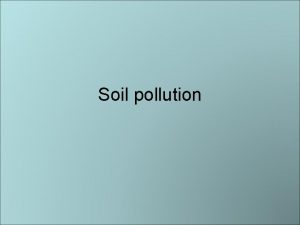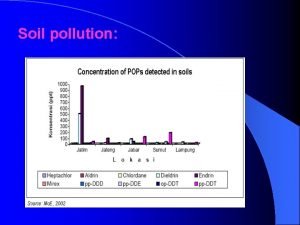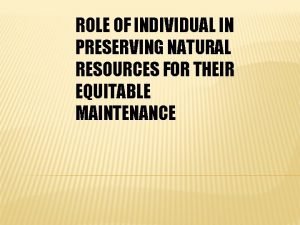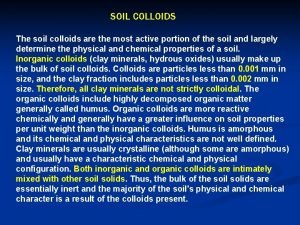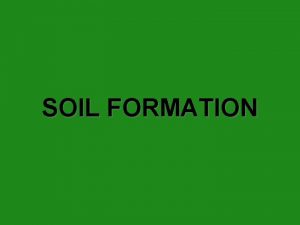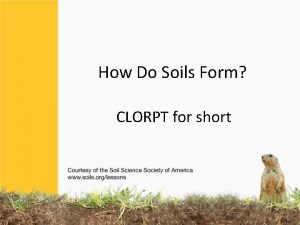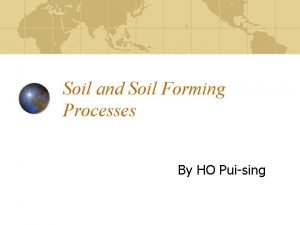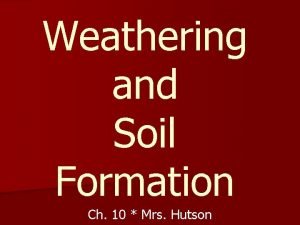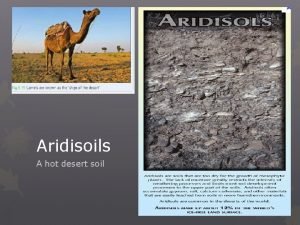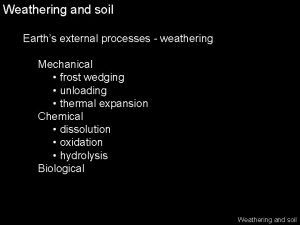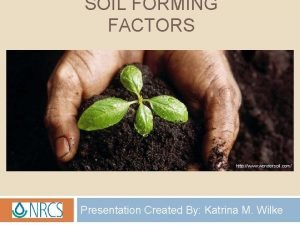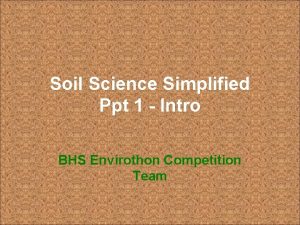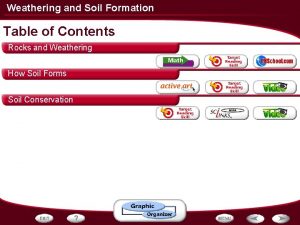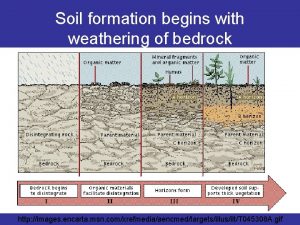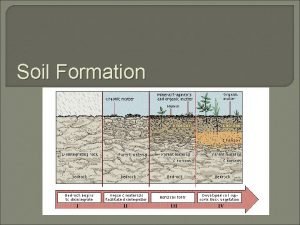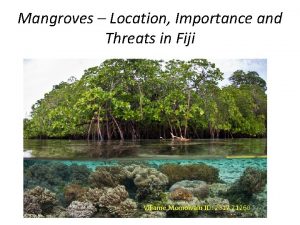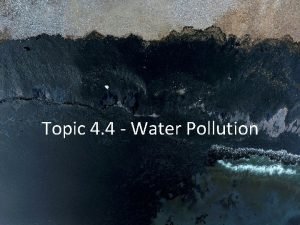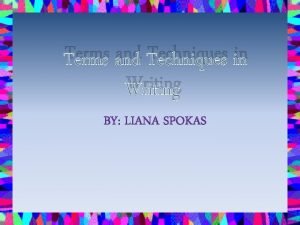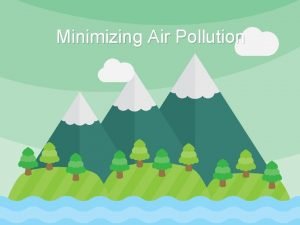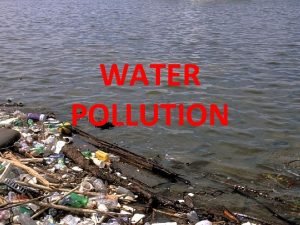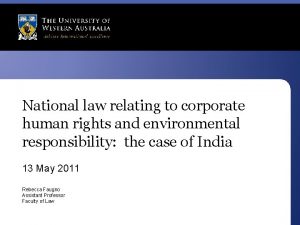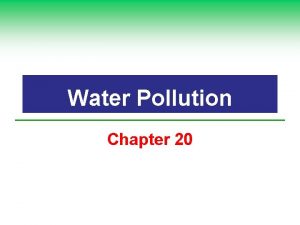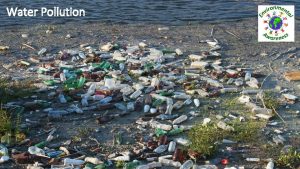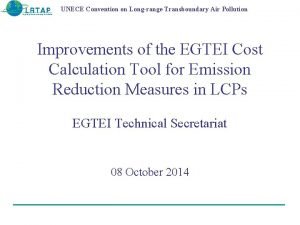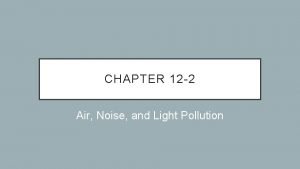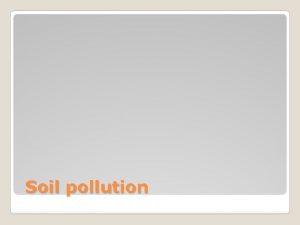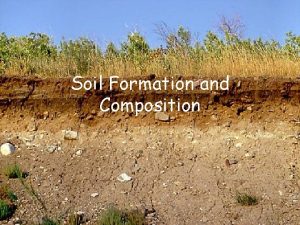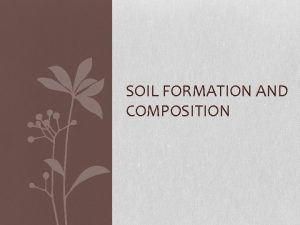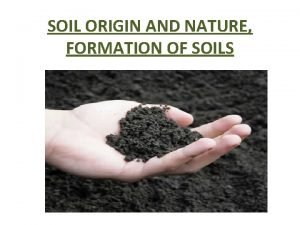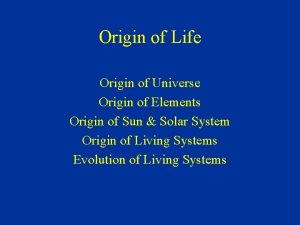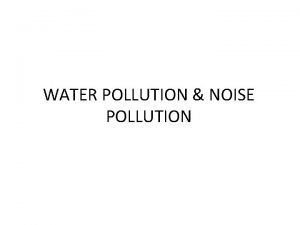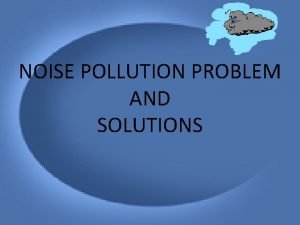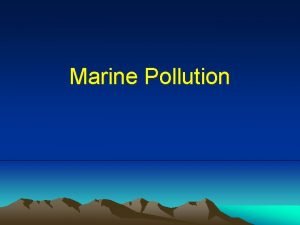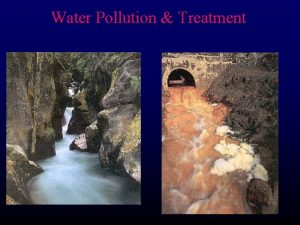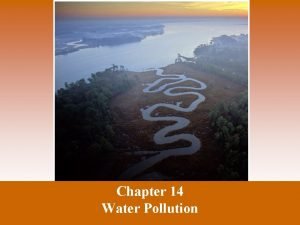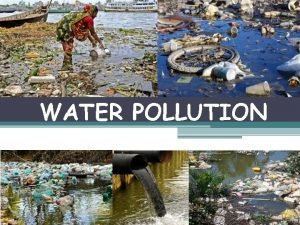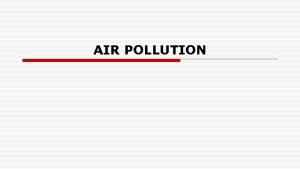Soil Pollution Soil Origin Formation of soil from




































- Slides: 36

Soil Pollution

Soil -Origin • Formation of soil from the parent material (bedrock): mechanical weathering of rocks by temperature changes, abrasion, wind, moving water, glaciers, chemical weathering activities and lichens. • Under ideal climatic conditions, soft parent material may develop into 1 cm of soil within 15 years.

• O-horizon: freshly-fallen & partially-decomposed leaves, animal waste, . Colour: brown or black. • A-horizon: partially decomposed organic matter & some inorganic mineral particles. • O & A-horizon: contain a large amount of bacteria, fungi forms complex food web in soil, recycles soil nutrients, & contribute to soil fertility. • B-horizon /(subsoil): less organic material & many organisms than A- horizon. • C-horizon: consists of broken-up bedrock, does not contain any organic materials. Chemical composition helps to determine p. H of soil & also influences soil’s rate of water absorption & retention. • R-horizon: The unweathered rock (bedrock) layer that is beneath all the other layers


Soil Pollution üSoil pollution is caused by the presence of chemicals or other alteration in the natural soil environment. üResulting in a change of the soil quality ülikely to affect the normal use of the soil or endangering public health and the living environment. üComposition of Soil: üInorganic matters-45% üOrganic-5% üSoil water-25% üSoil Air-25%


CAUSES OF SOIL DEGRADATION • • • Soil erosion/degradation is the loss of top soil erodes fertility of soil & reduces its water-holding capacity. Excessive farming, construction, overgrazing, burning of grass: cover and deforestation Excess salts and water (Salinization) Excessive use of fertilizers & pesticides Solid waste


OVERGRAZING

DEFORESTATION

Control of soil pollution • Use of pesticides and fertilizers should be minimized. • Cropping techniques should be improved to prevent growth of weeds. • Special pits should be selected for dumping wastes. • Controlled grazing and forest management. • Wind breaks and wind shield in areas exposed to wind erosion • Afforestation and reforestation. • Proper hygienic conditions • Public awareness • 3 Rs: reduce, reuse, recycle 11

Solid Waste

What is a solid waste • Any material that we discard, that is not liquid or gas, is solid waste – Municipal Solid Waste (MSW): • Solid waste from home or office – Industrial Solid Waste: • Solid waste produced from Mines, Agriculture or Industry

What is a Hazardous Waste? • Hazardous waste is a waste with properties that make it dangerous to the environment • Ignitability - Ignitable wastes create fires under certain conditions. • Corrosivity - Corrosive wastes are acids or bases. • Reactivity - Reactive wastes are unstable under "normal" conditions. They can cause explosions. • Toxicity - Toxic wastes are harmful (e. g. , containing mercury, lead, etc. ). When toxic wastes are disposed of on land, contaminated liquid may drain (leach) from the waste and pollute ground water. • Major types: Organics and Heavy Metals, Radioactive wastes

U. S. Scenario • • 4. 6% of world population 50% of toxic wastes 1/3 rd of solid wastes Mining (76%), agricultural (13%), industrial (9. 5%) = 98. 5% • Municipal solid waste – 1. 5%

Municipal Solid Waste (MSW)

Waste Management

Municipal Waste • • • On-site (at home) Open Dump Sanitary Landfill Incineration Ocean dumping

INCINERATION

OCEAN DUMPING

Marine pollution • The introduction by man, directly, or indirectly, of substances or energy to the marine environment which are hazards to human health, disturbancing the marine activities, impairment of the quality of seawater for various uses. • Does not include natural processes like volcanic eruptions or earthquakes

Marine pollutants • Agricultural run offs (herbicides, pesticides and nutrients) • Sediments • Sewage • Chemicals, Metals and Radioactive Substances • Persistent toxins (PCBs, DDT, heavy metals) • Oil • Plastics • Energy (Thermal & light)

Marine Pollutants

Sources of marine pollution Land sources • 80% of non-biological marine pollution comes from land based activities • pipes discharging directly into marine waters(sewage, industrial, chemical and food processing wastes) • Riverine flows into the sea carry pollutants from the entire catchment area. From Air • Global atmospheric inputs to the sea from air discharges Oil spills and offshore sources • Oily discharges from routine ship operations and illegal dumping of solid waste • Designated dumping grounds at sea • Accidental spills from Ships carrying hazardous substances, oil, gas etc.


Major Marine Pollutants • Non Bio-degradable plastics • Jelly fish in sea die due to the floating of plastic bags • Plastic debris kills 100, 000 marine mammals and 2 million sea birds die annually.

Control measures for oil pollution • Natural process of emulsification of oil by use of chemical dispersants: can be sprayed on the oil. • Slick-lickers: continuous belt of absorbent material dips through the oil slick & is passed through rollers to extract oil. • Rocks can be cleaned with high pressure steam

Control measures for Marine pollution • Plans for conserving marine boidiversity. • Connecting all the oceans. • Government should maintain cooperates with neighbouring states. • Having control instruments and efficient treatment facility.

Control measures for Marine pollution

Effects of marine pollution: • Effects on sea life • Effects on birds • Effects on human being – Health – Business • Eutrophication and development of red tides (phytoplankton blooms carrying red pigmentation) • Development of oil slick: When oil is spilled on sea, it spreads over the surface forming a thin film called OIL SLICK. Which damage marine life

Effects of marine pollution • Presence of heavy metals and organic pollutants. • Oil films decrease the rate of oxygen uptake by water & inhibit photosynthesis. • Hydrocarbons & benzopyrene accumulate in food.

NOISE POLLUTION • Defined as unwanted sounds that unreasonably (a kind of harsh, loud and confused sound), intruding into our daily activities • The most significant attributes of noise are: i) Its loudness ii) Duration • The unit of noise is decibel. • Human ear can tolerate noise up to 120 decibels.

Sources of NOISE POLLUTION (i) Road Traffic: Most prevalent and most damaging source Impact of road traffic noise depends on factors like: road location & design, and land use planning measures, building design, vehicle standards & driving behavior (ii) Air Traffic Noise from supersonic crafts are dangerous because of its intensity (iii) (iv) • • Railways: The level of noise associated with rail traffic is related to type of engine or rolling stock used, speed of the train, track type & condition, warning signals at crossings, whistles & horns, freight classification yards, & railroad construction & maintenance. Industry Product fabrication Product assembly Power generation Processing. (v) Construction: construction equipments. (vi) Consumer products: recreational, hobbies/workshop, household, music. (vii) Other sources: sirens, agricultural noise, noise from animals, humans & military

Measurement of Noise • Noise intensity is measured in decibel (Db) units • Decibel scale is logarithmic, • Each 10 Db increase represents a 10 fold increase in noise intensity • distance diminishes the effective decibel level reaching the ear. e. g. Moderate auto traffic at a distance of 30 m rates about 50 decibels, but for the same, for a driver with a car window open or a pedestrian on the sidewalk, same traffic rates about 70 decibels.

Effects of Noise • • • At 45 decibels of noise, average person cannot sleep At 85 decibels hearing damage, & at 120 decibels ear experiences pain. Lack of sleep, irritability, heartburn, indigestion, ulcers, high blood pressure, & possibly heart disease Hearing loss Non-auditory physiological effects – Annoyance – Communication interference

Noise Pollution Control Source path receiver concept: Can be controlled either by reducing the noise at the source or by preventing its transmission or by protecting the receiver • At the source: lubrication of machines, tightening the loose units, reducing the eccentricity • In the path: keeping the noisy machine covered, construction of noise barriers, sound-proofing of the building • Receiver: No use of horns other than in emergency, vehicle engines and appliances in good Condition, purchase the least noisy air conditioner or vacuum cleaner/quieter appliances, rest areas away from noise, turn down volume of Stereos.
 What is mean by soil pollution
What is mean by soil pollution Consequences of soil pollution
Consequences of soil pollution Soil pollution
Soil pollution Soil pollution images diagram
Soil pollution images diagram Soil pollution project
Soil pollution project Soil pollution
Soil pollution Effects of land pollution on human health
Effects of land pollution on human health Conclusion of soil pollution
Conclusion of soil pollution Formation initiale vs formation continue
Formation initiale vs formation continue Weathering types
Weathering types Types of soil colloids
Types of soil colloids Soil textural triangle practice exercises
Soil textural triangle practice exercises Clorpr
Clorpr What is soil formation
What is soil formation Puising
Puising Chapter 10 weathering and soil formation answers
Chapter 10 weathering and soil formation answers Hot desert soil
Hot desert soil Eluviation and illuviation
Eluviation and illuviation How soil is formed
How soil is formed Soil acidity ppt
Soil acidity ppt Stages of soil development
Stages of soil development Soil formation begins with weathering of
Soil formation begins with weathering of What is bedrock
What is bedrock Plastic limit
Plastic limit Soil formation
Soil formation Living soil vs dead soil
Living soil vs dead soil Convergent plate boundaries
Convergent plate boundaries A variety
A variety Poem on noise pollution
Poem on noise pollution Air pollution
Air pollution Conclusion of pollution
Conclusion of pollution Central and state pollution control board
Central and state pollution control board Ocean pollution
Ocean pollution Conclusion of water pollution
Conclusion of water pollution Conclusion of
Conclusion of Conclusion of air pollution
Conclusion of air pollution Air noise and light pollution
Air noise and light pollution
